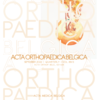Separation of congenital embryonic syndactylies in children: dorsal or volar flap? About a comparative retrospective series
Congenital defects of the hand; congenital syndactyly; flap coverage; full-thickness skin graft; scar contracture
Published online: Jan 22 2023
Abstract
Congenital syndactylies account for 1 to 2 out of 2000 birth defects. Although several types of syndactylies exist, we only studied embryonic syndactylies. The goal of our study was to compare 2 types of coverage flap for the reconstruction of the finger web spaces: a volar flap described by Blauth and a dorsal flap described by Gilbert. Between 1993 and 2015, children affected by simple and complex syndactylies (partial or complete) were treated in 2 french pediatric hospitals and were selected for our analytic, comparative, retrospective review. The 2 hospitals used different surgical techniques: one used a volar flap described by Blauth and the other a dorsal flap described by Gilbert. The children were followed up to look for signs according to the stages of the Classification of Withey and to evaluate a global result according to the score of Withey. Our secondary criteria of judgement were the aspect of the surgical scar according to the VSS (Vancouver Scar Scale) and the satisfaction of the parents and children. The age of the children, need for a surgical revision and time of last follow- up were also studied. We found statistically significant differences between group I (volar flap) and group II (dorsal flap) in favor of the volar flap: higher scores of Withey (even when the number of commissures was increasing) and better VSS (regardless of the number of web spaces treated). There was no statistically significant difference between the 2 groups in terms of age, follow-up, or rate of surgical revision. All in all, the volar flap presented less sequelae in terms of scar retraction. Regardless of the flap used, the cosmetic results of the full-thickness skin graft used impacted the result both on the receiving site (dyschromia, hairiness) and the donor site.
